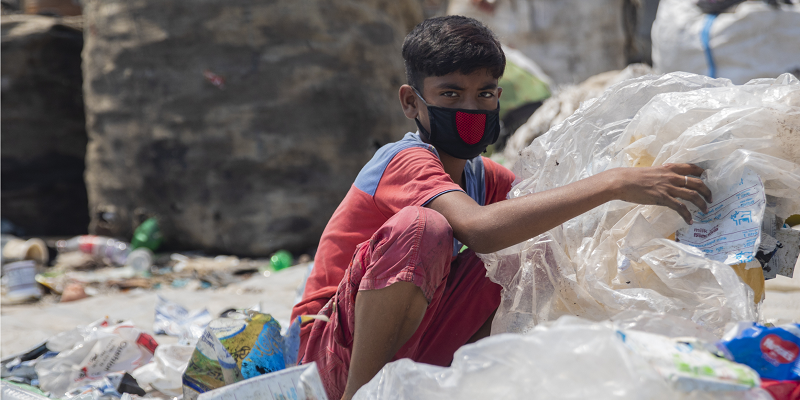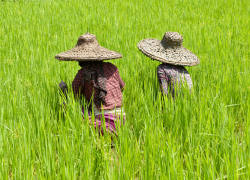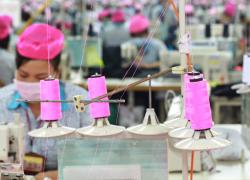
The U.S. Department of Labor just released its annual report, Findings on the Worst Forms of Child Labor, which details the state of child labor in 131 countries and territories and shows that COVID-19 is exacerbating risks for the world’s vulnerable children. The pandemic and subsequent economic downturns threaten to reverse decades of progress on child labor. In fact, the International Labor Organization and UNICEF forecast that by 2022 the increase in poverty associated with COVID-19 is likely to increase child labor by 8.9 million.
The report highlights these concerning trends, but also shows that there is hope. To combat these pandemic-related shifts, we’re working with governments around the world towards a future free of child labor.
Below are three ways the pandemic has exacerbated child labor – and what we and our partners are doing to protect children.
Labor Disruptions
COVID-19 has interrupted supply chains and closed businesses, resulting in furloughs and layoffs affecting millions. The rise in unemployment globally has increased poverty and reversed earlier progress in reducing child labor. Economic downturns and increased unemployment place greater pressure on children as potential income earners, especially if adult family members lose their jobs.
Greed has played a role too. Unscrupulous employers in the informal sector have taken advantage of this labor surplus, luring children and unemployed adults into unregulated jobs. And in many countries, labor inspectorates are performing fewer in-person worksite inspections, leaving innumerable labor violations undetected and unaddressed.
Fortunately, some governments are responding to protect workers and families. In this year’s report, we found several countries strengthening their labor inspectorates. Georgia and Zambia, for example, doubled their budgets for labor inspectors. Uganda and the Central African Republic doubled their labor inspectors, and Benin more than tripled its inspections.
The Bureau of International Labor Affairs is also tackling this challenge. The Better Work program, which we funded, is disseminating workplace health and safety guidance in local languages in a simple and actionable format. The project provides technical advice to factories and brands facing unexpected compliance issues resulting from closures, and it engages international buyers, unions and civil society to support and protect suppliers and their workers during economic shutdowns.
Impact of Disease
In the tragic event of a parent’s incapacitation or death, children are often driven to hazardous and exploitative work to support themselves and surviving family members. Even if an adult does not die from COVID-19, the cost of treatment can be insurmountable, intensifying financial stress on families.
Several department-funded projects have helped to keep workers and their families safe. Through the Avanza and Palma Futuro projects in Colombia and Paraguay, Partners of the Americas spread information on self care and spotting and responding to COVID-19 symptoms. The Okakuaa project in Paraguay educated employers and workers about government assistance programs for people impacted by the pandemic.
Out of School
COVID-19 has also resulted in the closure of many schools – a key driver of child labor. UNESCO reported that in March 2020, pandemic-related school closures affected more than 1 billion students globally; that’s 3 out of every 4 students worldwide. With schools closed, families in poverty may encourage children to work, a particularly dire situation because many children depend on schools for daily meals.
Fortunately, many countries are taking action to support children’s education. Georgia created platforms for distance learning and launched the “TV School” educational project to broadcast the national curriculum’s standard lessons in Georgian, minority languages and sign language. In Tunisia, the government is helping school dropouts through a new Second Chance program, which helps them complete their education or receive vocational training.
Projects we fund are also addressing pandemic-related education challenges. In El Salvador and Honduras, the Youth Pathways Central America project has supported virtual schooling for vulnerable children. The project provided school supplies, such as school kits that gave children in poverty resources to study at home. And to ensure kids could get a meal and stay healthy, the project distributed food and hygiene kits through school coordinators.
In Africa, the Combating Forced Labor and Labor Trafficking of Adults and Children in Ghana and Côte d’Ivoire project quickly pivoted from in-person larger scale trainings into a hybrid/virtual model, using an interactive platform and curriculum to continue to carry out effective programming.
Learn More
While COVID-19 has certainly made the world’s children more vulnerable, there are many ways that governments, companies, civil society, communities and workers can find solutions. We need companies to comply with national and international standards. We need workers to have a voice in the workplace, so they can bargain for better wages and benefits that help lift them out of poverty. We need governments to enact and enforce strong labor laws that protect children.
To learn more about global trends, data and countries’ efforts to combat child labor, read our 2020 Findings on the Worst Forms of Child Labor report or visit www.dol.gov/EndChildLabor.
You can also learn more about the Bureau of International Labor Affairs’ response to COVID-19 here:
- ILAB’s response to COVID-19
- COVID-19 and the Worst Forms of Child Labor: Addressing Increased Vulnerability
Thea Mei Lee is the deputy undersecretary for international affairs. Follow ILAB on Twitter at @ILAB_DOL.

 U.S. Department of Labor Blog
U.S. Department of Labor Blog

